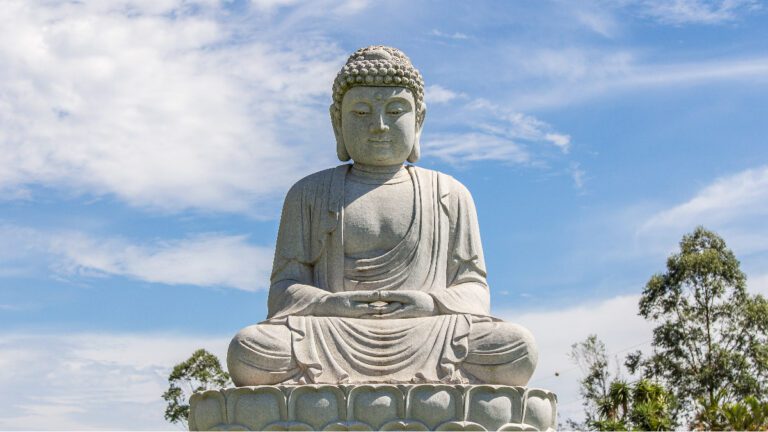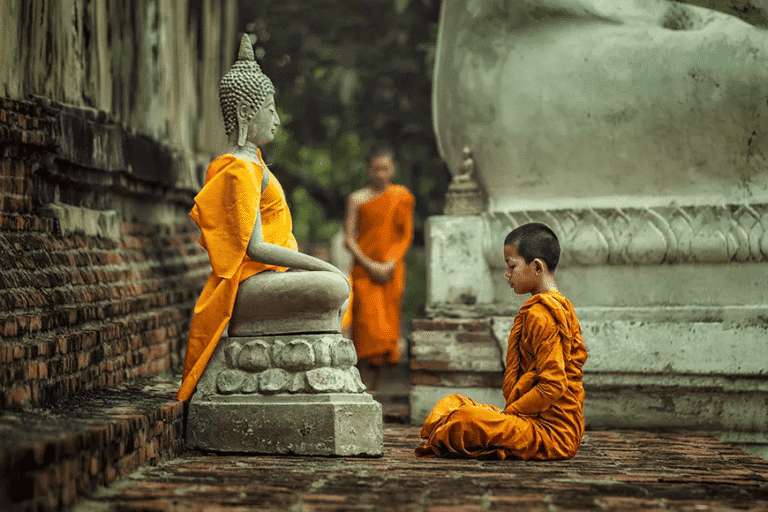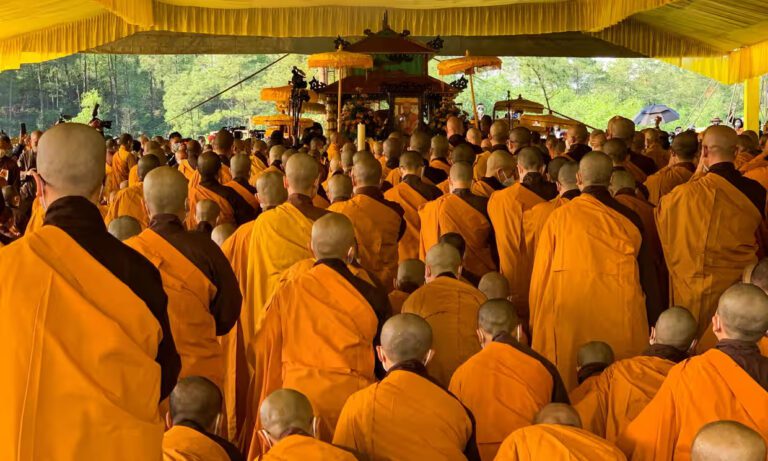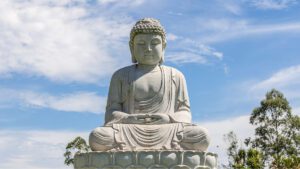Buddhism in China: History, Beliefs, and Cultural Influence
Buddhism in China has shaped Chinese civilization for over two thousand years. Introduced from India during the Han dynasty, Buddhism adapted to Chinese culture and became one of the country’s most influential religious and philosophical systems. Today, it remains a vital part of China’s spiritual landscape, coexisting with Confucianism and Daoism in what is often called the “Three Teachings” (三教).
In this article, we explore the origins, development, beliefs, and modern role of Buddhism in China, and how it continues to influence Chinese society, art, ethics, and thought.

Origins: How Buddhism Entered China
Buddhism arrived in China from India via the Silk Road around the 1st century CE. As trade flourished between the East and West, Buddhist monks and travelers brought sacred texts, relics, and teachings to China. The earliest records of Buddhist activity date back to the Han dynasty (206 BCE – 220 CE), when the religion was introduced as a foreign philosophy.
By the 4th to 6th centuries, during the Northern and Southern dynasties, Buddhism gained widespread popularity. Emperors sponsored temples, translations of sutras, and missionary activity. Key figures such as Kumarajiva, a translator of Sanskrit texts into Chinese, played a major role in making Buddhist teachings accessible to Chinese audiences.
Key Beliefs and Schools of Chinese Buddhism
Buddhism in China includes diverse traditions, but several schools became especially prominent:
1. Mahayana Buddhism
The dominant tradition in China, Mahayana emphasizes compassion, the path of the Bodhisattva, and the possibility of enlightenment for all beings. Chinese Buddhism is rooted in Mahayana teachings, although it also incorporates ideas from Hinayana and Vajrayana practices.

2. Chan Buddhism (Zen)
Chan Buddhism, known in Japan as Zen, developed in China during the Tang dynasty (618–907). It emphasizes meditation (禅, chán), direct experience of enlightenment, and simplicity. Chan had a profound influence on Chinese art, poetry, and monastic life.
3. Pure Land Buddhism
This school teaches faith in Amitabha Buddha and the aspiration to be reborn in the Pure Land, a realm of peace and enlightenment. Pure Land Buddhism is widely practiced in China due to its accessibility and focus on devotional practice.
Other significant schools include Tiantai, Huayan, and Yogācāra, which offer unique perspectives on metaphysics and practice.
Buddhism’s Impact on Chinese Culture
Buddhism deeply influenced Chinese culture, shaping everything from architecture and philosophy to art, literature, and daily life.
Art and Sculpture: Thousands of Buddhist statues, cave murals (e.g., the Dunhuang Caves), and temple carvings showcase a fusion of Indian Buddhist and traditional Chinese styles.
Architecture: Iconic pagodas, monastic complexes, and temple structures were modeled after Buddhist cosmology.
Language and Literature: Buddhist concepts entered the Chinese lexicon, and Buddhist stories were retold in Chinese idioms, poetry, and novels.
Moral and Ethical Teachings: Ideas of compassion, karma, and rebirth influenced Chinese views on life, death, and morality.
Over time, Buddhism was absorbed into the broader Chinese worldview, harmonizing with Confucian values of order and hierarchy, and Daoist ideas of nature and harmony.
Government and Religion: Tolerance and Control
Throughout history, China’s rulers have alternated between supporting and suppressing Buddhism. During the Tang dynasty, Buddhism flourished, but later emperors—concerned about the religion’s foreign origins and growing wealth—launched persecutions. One of the most notable was the Great Anti-Buddhist Persecution of 845, which destroyed thousands of temples.
In modern times, the People’s Republic of China promotes religious freedom in theory, but all religious practice is regulated by the state. Buddhist temples operate under government oversight, and clergy must register with official associations.
That said, Buddhism remains the most widely practiced religion in China. According to estimates by the Pew Research Center, over 180 million people in China identify as Buddhists, although numbers vary due to informal practices and lack of registration.

Modern Revival and Global Influence
Since the 1980s, Buddhism in China has experienced a revival. Many ancient temples have been restored, new monasteries constructed, and public interest in meditation, vegetarianism, and traditional values has grown.
Urban Chinese—especially the younger generation—are increasingly drawn to Buddhism’s philosophical insights and mindfulness practices. Meanwhile, Chinese Buddhist institutions such as Nanputuo Temple in Xiamen and Shaolin Temple in Henan promote Buddhism both locally and internationally.
Buddhism also plays a role in China’s soft power diplomacy, with temples participating in international exchanges, and the Chinese government supporting Buddhist forums to promote cultural dialogue.
UNESCO recognizes several Buddhist sites in China as World Heritage Sites, including the Longmen Grottoes, Mogao Caves, and Yungang Grottoes, preserving the legacy of Buddhist influence on Chinese civilization
Conclusion: Buddhism’s Enduring Legacy in China
Buddhism in China is more than a religion — it is a cultural force that has shaped Chinese society for over two millennia. From the ancient caves of Dunhuang to modern urban temples, Buddhism continues to offer spiritual guidance, cultural identity, and philosophical insight to millions of Chinese.
As China navigates rapid modernization and globalization, Buddhism remains a quiet but powerful presence, offering a connection to tradition, ethics, and the search for inner peace.
Stay connected with China Analysis as we explore the spiritual, cultural, and philosophical dimensions of China’s past and present.






